Mastering the Art of Content Creation Workflow
Content creation workflow is key to turning your creative ideas into high-quality, consistent, and SEO-rich content from start to finish. If you’re looking for a quick overview, here it is:
- Plan your content objectives and goals
- Assign roles and responsibilities
- Set up a detailed and structured process
- Use the right tools for automation and management
A content creation workflow helps teams streamline the process from ideation to publication. It ensures that every piece of content is well-planned and efficiently produced, avoiding bottlenecks and optimizing productivity.
I’m Digital Jeff, an expert in content creation workflow. Over the last 20 years, I’ve helped top personal brands and companies develop successful digital content strategies and scale their online presence. Let’s explore crafting a streamlined content creation workflow in the next sections where we’ll explore practical and effective solutions.

What is a Content Creation Workflow?
A content creation workflow is a structured process that guides the creation, optimization, and distribution of content from start to finish. It ensures every piece of content is well-planned and efficiently produced, avoiding bottlenecks and optimizing productivity.
Task-Based Workflows
Task-based workflows break down the content creation process into specific tasks. Each task is a distinct step, such as researching, writing, editing, and publishing.
Detailed Tasks
In a task-based workflow, every action required to produce content is clearly defined. For instance:
- Researching Keywords: Identify relevant keywords to target.
- Creating an Outline: Develop a detailed content brief.
- Writing the Draft: Craft the initial content draft.
- Editing: Review and refine the draft for clarity and accuracy.
- Publishing: Upload and publish the content on the desired platform.
New Content Teams
For new content teams, task-based workflows are especially useful. They provide clear expectations and responsibilities, ensuring everyone knows their role and what they need to do next.
Status-Based Workflows
Status-based workflows focus on the stage or status of the content within the creation process. This type of workflow is more dynamic and flexible.
Experienced Teams
Experienced teams often benefit from status-based workflows. These workflows allow for more fluid movement between stages, accommodating changes and iterations more easily.
Stages Defined by Status
In a status-based workflow, content moves through various stages such as:
- In Progress: Content is being created.
- Under Review: Content is being edited or reviewed.
- Ready for Publishing: Content is finalized and ready to be published.
- Published: Content is live and available to the audience.
Tracking Progress
Status-based workflows make it easy to track the progress of content. Tools like Trello can visually represent the workflow, showing where each piece of content is in the process.
Both task-based and status-based workflows have their unique benefits. Choosing the right one depends on your team’s structure and the complexity of your content creation process.
Next, we’ll dive into the steps to build an effective content creation workflow.
Steps to Build an Effective Content Creation Workflow
Establish Your Content Goals and Audience
First, define your content goals. Are you aiming for increased brand awareness, better customer retention, or more sales? Clear goals will guide your content strategy.
Know your audience. Conduct thorough audience research to understand their preferences, pain points, and behaviors. This helps in creating targeted content that resonates with them.
Example: If your goal is to increase brand awareness among young adults, focus on creating engaging Instagram stories and TikTok videos.
Pro Tip: Use SMART objectives (Specific, Measurable, Achievable, Relevant, Time-bound) to set clear goals. For instance, “Increase Instagram engagement rate by 20% over the next quarter.”
Define Roles and Responsibilities
Assign clear roles to your team members. This ensures accountability and smooth workflow. Key roles include:
- Content Creators: Responsible for generating ideas and creating content. They should be fully understand how to use proper camera equipment.
- Editors: Ensure the content is polished and error-free.
- Project Managers: Oversee the entire process, ensuring deadlines are met.
Tools Needed: Use project management tools like ClickUp or Trello for assigning tasks and tracking progress.
Case Study: At a creative agency, roles were clearly defined using ClickUp, which resulted in a 30% increase in content production efficiency.
Decide Content Types and Frequency
Choose the right content types based on your goals and audience. Options include:
- Blogs: Great for in-depth information and SEO.
- Videos: Ideal for engaging and visual storytelling. Never forget YOUTUBE IS KING! Upload all your videos here.
- Social Media Posts: Perfect for quick updates and audience interaction. (Get Higher Reach with Short form reels on Instagram, tiktok, and youtube Shorts.)
Set a content calendar to plan and schedule your content. Consistency is key to maintaining audience interest.
Pro Tip: Use tools like SocialBee to customize and schedule posts for different platforms.
Develop the Content Creation Process
Strategize and plan your content. Brainstorm with your team to outline the steps needed for each content type.
Example: For a blog post, steps might include:
- Researching topics
- Writing a draft
- Editing
- Publishing
- Analyzing performance
Set realistic timelines for each step to ensure deadlines are met without compromising quality.
Document and Automate Your Workflow
Document your processes using Standard Operating Procedures (SOPs). This ensures everyone knows the steps involved and can refer back if needed.
Use workflow software like Narrato to create custom workflows and automate repetitive tasks.
Example: Automate social media posts using SocialBee, freeing up time for content creation.
Pro Tip: Leverage AI tools for content generation and optimization. Tools like Narrato offer grammar checkers, AI writers, and SEO optimizers to streamline your workflow.
By following these steps, you’ll create a content creation workflow that is efficient, scalable, and aligned with your business goals. Next, we’ll explore the key components of an effective content workflow.
Key Components of an Effective Content Workflow
An effective content creation workflow is more than just a checklist. It’s a well-oiled machine that ensures your team can produce high-quality content consistently. Here are the key components:
Detailed Documentation
Detailed documentation is crucial. It involves writing down all essential information related to the workflow, including stages and tasks. This serves as a reference for anyone needing a refresher and helps new team members get up to speed quickly.
Example: A content workflow for creating an article might include stages like keyword research, drafting, editing, and publishing.
Benefits:
– Provides clarity and consistency
– Reduces the risk of missed steps
– Helps in onboarding new team members
Defined Content Team Roles
Clearly defining content team roles is vital. Each team member should know their duties and responsibilities to prevent confusion and overlap.
Example: The content creator writes the draft, the editor ensures it’s error-free, and the SEO specialist optimizes it for search engines.
Benefits:
– Eliminates confusion
– Ensures accountability
– Improves efficiency
Clear Due Dates for Deliverables
Setting clear due dates for deliverables ensures that everyone knows when their tasks are due. This helps keep the project on schedule.
Example: Assign a deadline for each stage of the workflow, like giving the writer a week to complete the first draft and the editor three days to review it.
Benefits:
– Keeps the project on track
– Prevents bottlenecks
– Helps in planning future tasks
Open Communication Channels
Open communication channels are essential for a smooth workflow. Team members should be able to ask questions and get quick answers without holding up the process.
Example: Use tools like Slack or Microsoft Teams for instant messaging and quick clarifications.
Benefits:
– Facilitates quick problem-solving
– Improves collaboration
– Reduces delays
In summary, a well-documented workflow with defined roles, clear due dates, and open communication channels can significantly improve your content creation process. Next, let’s dig into the tools and software that can help manage your content workflow effectively.
Tools and Software for Content Workflow Management
To manage your content creation workflow efficiently, you’ll need the right tools. These tools can help you streamline tasks, improve collaboration, and automate repetitive processes. Let’s break down some of the best options out there.
Project Management Tools
Project management tools help you organize tasks, set deadlines, and track progress. Here are some top choices:
- Monday.com: This tool offers customizable workflows, timelines, and task boards. It’s great for visualizing your entire content process.
- ClickUp: Known for its flexibility, ClickUp provides various views like Board, List, and Calendar. It also has ready-to-use templates to kickstart your workflow.
- Trello: Trello uses a card-based system to manage tasks. It’s simple but effective, especially for smaller teams.
Content Creation Tools
Creating high-quality content requires specialized tools. Here are some that can lift your content game:
- Canva: Perfect for creating visually appealing graphics and social media posts. Canva’s drag-and-drop interface is user-friendly and versatile.
- Adobe Photoshop: This is the go-to tool for detailed image editing and design. It’s powerful but may require a learning curve.
- Final Cut Pro: My personal favorite video editing software for short form content.
- Adobe Premiere Pro: 99% of Video Editors prefer Adobe Premiere over Final Cut Pro
Automation Software
Automation software can save you a lot of time by handling repetitive tasks. GoHighLevel is my go to app!
- GoHighLevel: GoHighLevel automates marketing tasks like email campaigns and social media posts. It also offers robust analytics to track performance. Stay tuned for a full tutorial on this software.
By leveraging these tools, you can create a more efficient and effective content creation workflow. Next, let’s address some frequently asked questions about content workflows.
Frequently Asked Questions about Content Creation Workflow
What are the 7 steps of content creation?
- Gather Information: Start by collecting all necessary data and insights. Understand your audience, their preferences, and the latest trends.
- Blog Topic Analysis: Identify potential topics by analyzing keywords, competitor content, and audience interests.
- Strategize: Develop a clear plan. Define your goals, target audience, and the message you want to convey.
- Write: Create the content. Ensure it’s engaging, informative, and aligned with your strategy.
- Optimize & Publish: Use SEO best practices to optimize your content. Then, publish it on your chosen platforms.
- Promote: Share your content across various channels like social media, email newsletters, and blogs to reach a wider audience.
- Review & Repeat: Analyze the performance of your content. Learn from the results and refine your process for future content.
What are the 5 steps for the content creation framework?
- Come Up with Ideas: Brainstorm and research to generate content ideas that resonate with your audience.
- Plan and Set Timelines: Create a content calendar. Set realistic deadlines for each stage of the content creation process.
- Create a Workflow: Establish a structured content creation workflow. Define tasks, assign roles, and set checkpoints.
- Review and Edit: Ensure the content meets quality standards. Edit for clarity, accuracy, and engagement.
- Publish and Promote: Once approved, publish the content and promote it across your marketing channels.
What are the 5 C’s of content creation?
- Content Relevance: Ensure your content is relevant to your audience’s needs and interests. It should address their pain points and provide value.
- Content Quality: High-quality content is well-researched, accurate, and professionally written. It should be free of errors and provide deep insights.
- Content Consistency: Maintain a consistent voice, style, and posting schedule. This helps in building trust and a loyal audience.
- Content Clarity: Your content should be easy to understand. Use simple language and clear formatting to improve readability.
- Content Creativity: Stand out by being creative. Use unique angles, engaging visuals, and interactive elements to capture your audience’s attention.
Conclusion
Creating a content creation workflow is essential for any digital strategy. It ensures that your content production is organized, efficient, and aligned with your business goals. By streamlining your content creation process, you can increase productivity, reduce errors, and improve collaboration within your team.
Our UNSIGNED creator community is an excellent resource for learning how to implement these workflows efficiently. Their courses provide actionable insights and practical tools that can help you master the art of digital content planning and workflow management.
A well-structured content workflow brings several benefits:
- Increased Productivity: With a clear plan in place, team members know exactly what to do and when. This reduces downtime and confusion, allowing your team to produce more content in less time.
- Reduced Errors: Defined steps and quality checks ensure that content is reviewed and edited thoroughly before publication. This minimizes the risk of errors and maintains the quality of your content.
- Improved Collaboration: Open communication channels and clear roles make it easier for team members to collaborate effectively. Everyone knows their responsibilities and can quickly get answers to their questions, leading to smoother teamwork.
By following a structured workflow, you can transform your content creation process into a well-oiled machine. This not only helps in producing high-quality content consistently but also in achieving your broader business objectives.
Ready to take your content strategy to the next level? Check out our AI courses for more tips and tools to streamline your content creation process.
This section is designed to be concise yet comprehensive, ensuring readers understand the importance of content workflows and how they can benefit from implementing them. If you need more details or adjustments, ask!














